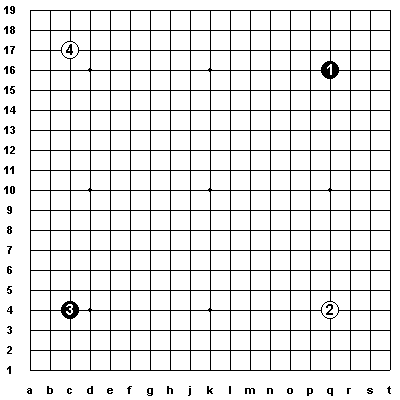
Home > Steve > Go > Problem of the month

My thanks to Charles Matthews who has sent me six professional games all of which have this opening, (well actually, in some of them Black 1 and 3 are played in the other order, but...). I intend to make at least two 'Problem of the months' out of this material, but the second part probably won't be next month
Anyway the first part of the problem is to look at this early stage of the fuseki and work out what Black 5 might be, and then to ponder any immediate followups. There could be six different answers or just one...
The first thing to note is that 1, 2 and 4 are all symmetrical 3-3 or 4-4 points. Black 3 is the only asymmetric play. In my view, this increases the significance of a second play in the south west corner.
It turns out that one game had Black 5 played in the south west corner, whilst the other 5 were all knight's approaches to White 2.
Nie Weiping 9p v Cao Dayuan 9p
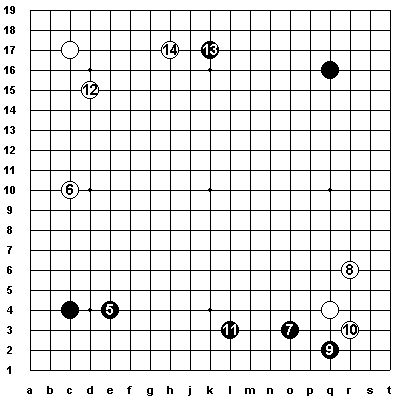
In this 9p v 9p game, Black plays 5 at what I feeel to be the 'obvious' point. The moves up to 14 all then seem to flow as the big points are occupied.
Yang Weishang v Ding Hong
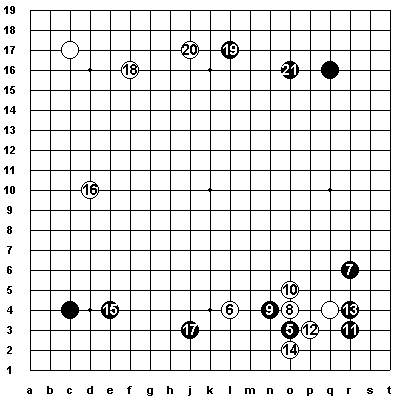
White 6 here was a pincer. In the remaining four games, White answered Black with a knight's move.
Tang Yenwu v Wu Biji

The lower side is settled at once before they move on to the rest of the board.
Chang Hao v Ding Hong
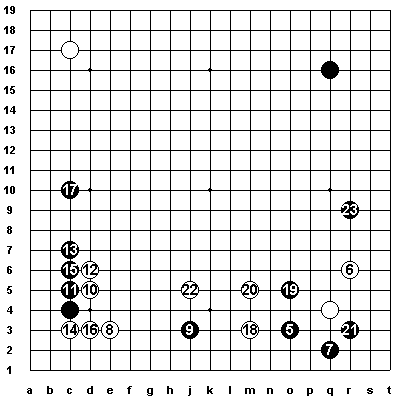
Here White prefers to play 8 to sort the south west corner out without giving Black the opportunity to extend as 9 in Dia 4. White plays to capture the lower side on a large scale, but comes under pressure on the right.
Yamabe 9p v Rin 9p
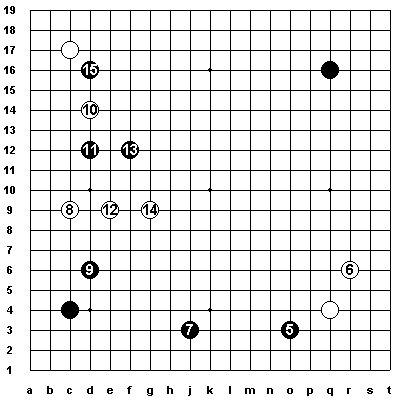
Black 7 makes the "Mini-Chinese" opening (3, 5 & 7). In this game the north west becomes the area of contest.
Hasegawa 9p v Iwata 9p
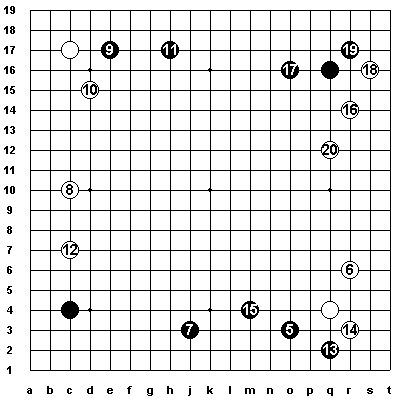
The "Mini-Chinese" again, but a much calmer start.
Home >
Steve >
Go >
Problem of the month
British Go Association
Last updated 2004-08-10
This page is part of http://www.stocton.org/
Email: webmaster@stocton.org